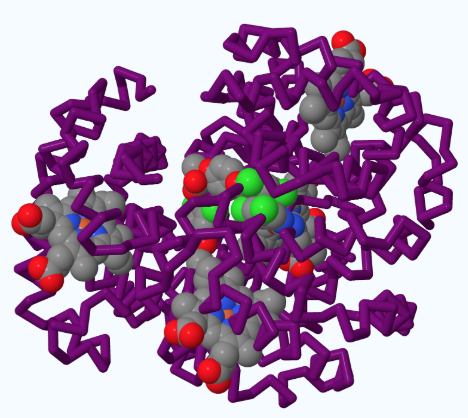The year is 1849. On a rainy day in Baltimore, Joseph W. Walker, an editor for the Baltimore Sun, comes across a man lying in the gutter on the side of the road, delirious and barely conscious[1]. Recognizing him instantly, Walker seeks medical attention and writes a letter to one of the gentleman’s acquaintances in Baltimore asking for help [1]. Unfortunately, it is too late: he never regains consciousness, and dies just 4 days later [1]. Though the circumstances of his death are mysterious and intriguing by any standards, they are made even more so by the fact that the man was Edgar Allan Poe.
How did Poe, the esteemed writer and poet, master of mystery and the macabre, end up like a character in one of his own short stories? Multiple theories--some more plausible than others--attempt to explain the mystery, including alcoholism, heavy metal poisoning, rabies, and murder [1]. None have been proven. Yet one theory finds basis not only in Poe’s death, but his life as well: carbon monoxide poisoning.
Known as “the silent killer” due to its lack of color or odor, carbon monoxide gas acts by binding to hemoglobin, the protein in our blood responsible for carrying oxygen to the tissues [2]. Carbon monoxide has a much higher affinity for hemoglobin than oxygen, meaning that it binds more tightly and is able to outcompete oxygen for binding space [2]. As a result, there is less oxygen available for our brain and tissues, leading to disastrous consequences [2]. Short-term symptoms include headache, nausea, and weakness; long-term exposure can cause coma or death [2].
Ball-and-stick model of hemoglobin, the protein responsible for carrying oxygen in our blood.
It is very likely that Poe was exposed to carbon monoxide on a regular basis: light fixtures of the era functioned through the burning of coal, which produced fumes that contained high levels of CO [3]. Additionally, chronic, low-level carbon monoxide exposure often isn’t immediately diagnosed because symptoms are much more subtle and may manifest in diverse ways [2]. One of these symptoms is partial facial paralysis caused by nerve damage from a lack of oxygen [3]. Pictures of Poe’s face exhibit the tell-tale slanting of the eyes and mouth, a hallmark of low-grade CO exposure [4].
Photo of Poe taken in 1849, original and colorized, showing slight slanting of the eyes and mouth that is indicative of chronic CO exposure [6].
In addition, many of the characters in Poe’s works exhibit the delusion and paranoia that are symptomatic of CO poisoning[4]. In The Tell-Tale Heart, the narrator believes he can hear the beating heart of his victim underneath the floorboards. In The Black Cat, a man is haunted by the pet that he killed in a drunken rage. The list goes on[5]. Poe’s own delirium and vivid hallucinations just before his death might also have been a product of carbon monoxide exposure: in his last moments, the grisly and haunting stories of his works became his reality [1].
Ultimately, there is no way to prove that either Poe’s inspiration for his works or his ultimate demise were results of chronic carbon monoxide poisoning. His cause of death was officially listed simply as “phrenitis,” or swelling of the brain[1]. However, understanding the subtle symptoms of CO exposure could be the key to saving a life in the present day. And even if it isn’t true, it is interesting to consider that the morbid and fantastical worlds imagined in Poe’s works could be rooted in science after all.
References:
Geiling, Natasha. "The (Still) Mysterious Death of Edgar Allan Poe." Smithsonian.com. Last modified October 7, 2014. Accessed December 2, 2019. https://www.smithsonianmag.com/history/still-mysterious-death-edgar-allan-poe-180952936/.
Blumenthal, Ivan. "Carbon Monoxide Poisoning." Journal of the Royal Society of Medicine 94, no. 6 (June 2001). Accessed December 2, 2019. https://doi.org/10.1177/014107680109400604.
Otterbein, Leo E. "Quoth the Raven: Carbon Monoxide and Nothing More." Medical Gas Research 3, no. 7 (March 6, 2013). Accessed December 2, 2019. https://doi.org/10.1186/2045-9912-3-7.
"Edgar Allan Poe and the Tell-Tale Face of Carbon Monoxide Poisoning." Multiple Chemical Sensitivity. Last modified October 24, 2006. Accessed December 2, 2019. http://www.mcsrr.org/poe/.
"An Exploration of Short Stories by Edgar Allan Poe." PoeStories.com. Accessed December 2, 2019. https://poestories.com/summaries.php.
Pat. Edgar Allan Poe 1849. Photograph. Flickr. June 1, 2016. Accessed December 2, 2019. https://www.flickr.com/photos/patseg.
Edumol Molecular Visualization. Hemoglobin. Image. Flickr. March 23, 2017. Accessed December 2, 2019. https://www.flickr.com/photos/edumendo.



![Photo of Poe taken in 1849, original and colorized, showing slight slanting of the eyes and mouth that is indicative of chronic CO exposure [6].](https://images.squarespace-cdn.com/content/v1/558bc22ce4b0574c94d31c79/1575844230598-R3XHDUY5OQE7SJ7EKBH6/Screen+Shot+2019-12-08+at+4.30.16+PM.png)